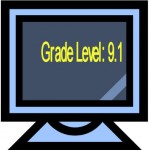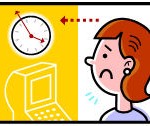 Is your compelling online content lost in long sentences and confusing text? One way to test the readability of content is to read it aloud. It’s easy to spot long, run-on sentences when you find yourself gasping for air. But that’s not all you can do. Consider conducting a quantitative test of readability as a more definitive guide. I recently discovered a readability scoring system built right into Microsoft Word called the Flesh Read Ease Score.
Is your compelling online content lost in long sentences and confusing text? One way to test the readability of content is to read it aloud. It’s easy to spot long, run-on sentences when you find yourself gasping for air. But that’s not all you can do. Consider conducting a quantitative test of readability as a more definitive guide. I recently discovered a readability scoring system built right into Microsoft Word called the Flesh Read Ease Score.
Developed by author and writing consultant Rudolf Flesch (1911-1986), the score objectively calculates readability using a formula that takes into account the average number of words in a sentence and the number of syllables in the passage. Scores range from 0 to 100. You don’t need to know the formula, just how to interpret the scores. A score of zero would be most difficult and a score of 100 easiest. Scores in the 60 to 70 range are considered readable by the average reader.
To put the scores into context, Readers Digest has a Flesch Reading score of 65, while the Harvard Business Review has a score in the low 30s.
Another measure called the Flesch-Kincaid formula, also available in Microsoft Word, translates the readability score to a grade level. A score of 65 correlates with the 8th to 9th grade level and a score of 55 indicates a 10th to 12th grade level. Scores between 0 and 30 represent college graduate level readability.
Scores are obtained automatically when you run a Word document through a spelling and grammar check. However, you have to adjust the readability options in Word to have the test results appear.
How to Set the Readability Options in Microsoft Office Word 2007
- Click the Microsoft Office Button
, and then click Word Options.
- Click Proofing.
- Make sure Check grammar with spelling is selected.
- Under When correcting grammar in Word, select the Show readability statistics check box.
While your B2B audience may be highly educated, your website is probably not the place to impress them with five syllable words and long cumbersome sentences. If your score is coming up too high, break up longer sentences and replace words that may be causing confusion. Potential buyers want to find information fast, and you can help them with clear, concise and readable text.
How does your website content score on the Flesch Reading Ease Test? Here’s how my text scored on this blog post.
Flesch Reading Ease 56.8
Flesch-Kinkaid Grade Level 9.1




